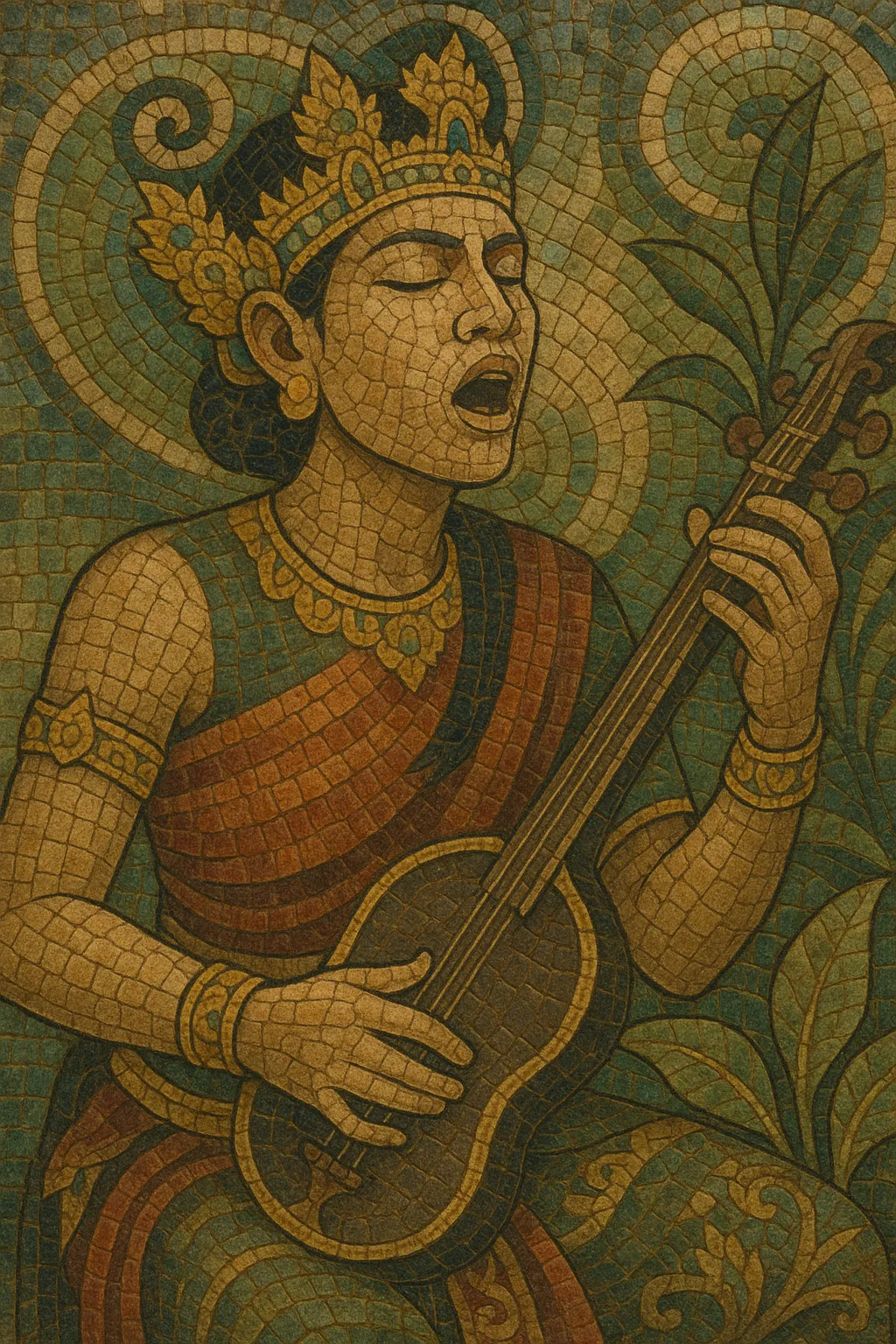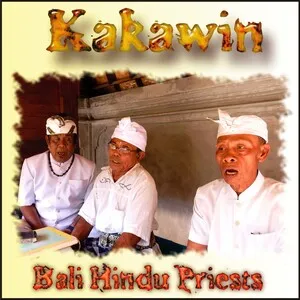Kakawin is an Old Javanese courtly poetry-and-chant tradition whose metrics are adapted from Sanskrit kāvya prosody. Each stanza (pada) follows a strict pattern of long (guru) and short (laghu) syllables, and the poet selects one of many classical metres (vṛtta) such as śloka, indravajrā, or mandākrāntā.
Although fundamentally a literary form, kakawin is also a vocal performance practice. In Java (historically) and especially in Bali today (as kekawin), texts are chanted in an ornate, melismatic style, sometimes unaccompanied and sometimes supported by a small gamelan, most commonly gender wayang. Themes are epic and didactic, drawing on the Ramayana and Mahabharata alongside local ethical, devotional, and royal subjects.
Kakawin crystallized in the Hindu-Buddhist courts of Central and East Java around the 9th–10th centuries, when Old Javanese poets adapted Sanskrit kāvya prosody to the Austronesian linguistic environment. The borrowed system of vṛtta and the guru–laghu contrast were reinterpreted through Javanese phonotactics (open/closed syllables, consonant clusters) to approximate syllable weight.
Between the 11th and 14th centuries—spanning the eras of Kediri, Singhasari, and Majapahit—kakawin became the prestige medium for epic narrative, political theology, and court ethics. Masterworks such as Arjunawiwaha (Mpu Kanwa), Bharatayuddha (Mpu Sedah & Mpu Panuluh), Smaradahana (Mpu Dharmaja), Sutasoma and Arjunawijaya (Mpu Tantular), and the Desawarnana/Nāgarakṛtāgama (Mpu Prapanca) exemplify technical virtuosity in meter and rhetorical ornament (yamaka, upamā, and other alankāra).
While the genre began as written poetry, it was always intended for oral delivery. Chanting styles (parikan, melodic formulas) developed to map the metrical weight of syllables onto melodic contours. In Java, courtly performance intersected with wayang narratives; in Bali, the living kekawin tradition is heard in rituals, pedagogy, and temple ceremonies, often with gender wayang accompaniment.
After the Islamic period transformed Javanese literary taste, kakawin receded in Java but continued robustly in Bali. Its metres, diction, and epic subject matter informed later Javanese and Balinese song forms and remain central to Balinese classical education and ritual performance.



